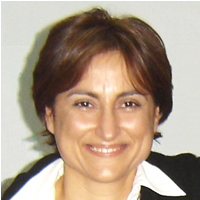Experience with trans radial uterine artery embolisation for uterine fibroids in a tertiary center in Saudi Arabia
Published on: 1st December, 2020
OCLC Number/Unique Identifier: 8812313094
Trans-radial uterine artery embolization (UAE) is acknowledged as a non- invasive, cost-effective and safe procedure for the treatment of symptomatic fibroids. However, it is associated with the recurrence of symptoms like abnormal uterine bleeding and pressure symptom in some patients. This is a comparative study of our data with other international data, in the context of percentage reduction in fibroid size, accompanying controlling factors, short and long term follow up data analysis of the first two years was done. Careful pre-procedural counseling of future possibility of fibroid recurrence and means of management should be stressed.
Materials and methods: A retrospective cohort study at the Security Forces Hospital in Riyadh, Saudi Arabia, was conducted. The study was done from 1st November 2017-31st October 2019, on symptomatic patients diagnosed with fibroids, who refused surgical treatment.
The outcomes included: fibroid site, size and anatomical position, patients’ symptoms, general condition, and early and delayed complications. These data were compared with those from other international studies.
Results: The study involved 23 patients (mean age: 39 years). The average percentage reduction in fibroid volume was 49%. There were no major complications and no recurrence of symptoms during the covered period. Data analysis revealed a poor correlation between the overall percentage reduction of fibroid size with fibroid number, age of patients’, and body mass indices.
Conclusion: Despite poor correlation, we provided preliminary data of the first two years out of the total five-year projected period of the study where it showed effectiveness and relative safety of radial - UAE for fibroid.
Chronic endometritis in in vitro fertilization failure patients
Published on: 1st December, 2020
OCLC Number/Unique Identifier: 8875583182
Introduction: Chronic endometritis (CE) is a common cause of infertility in asymptomatic patients and its diagnosis and treatments improved assisted reproduction technique outcome in most of the specialized centers. Diagnosis of CE in endometrial biopsy by Hematoxylin and Eosin (H&E) stain is hard to identify chronic inflammatory cells from the stroma and the use of plasma cells-specific stains is helpful.
Aim of the work: Evaluation of the use of CD138 in the identification of plasma cells in endometrial biopsy of patients with previous IVF trial failure.
Material and methods: Hysteroscopic and curettage endometrial biopsies from fifty-five females with previous IVF trial failure were stained with H&E and CD138 immunostaining for detection of plasma cells.
Results: Plasma cells were identified in 52.7% of cases by H&E and in 6/55 by CD138 immunostaining. CD138 is more sensitive in detecting plasma cells in endometrial biopsy than H&E stain. There was a significant statistical correlation between CE and abnormal uterine bleeding, abortion and primary infertility (p > 0.5).
Conclusion: Diagnosis of CE is helpful in infertility patients with IVF trial failure to improve the outcome of the maneuver. CD138 is more sensitive for plasma cells specially in endometrial biopsies than H&E.
Intravenous leiomyomatosis of the uterus: still discovered on anatomopathological examination
Published on: 2nd September, 2022
Background: Leiomyomas beyond the uterus are defined by benign smooth muscle cell tumors outside of the uterus. Intravenous leiomyomatosis is a rare type of uterine leiomyoma and is characterized by the formation and growth of benign leiomyoma tissue within the vascular wall. Herein, we present a case of Intravenous leiomyomatosis successfully treated by surgical removal and a review of actual medical recommendations.Case presentation: A 49 - year-old woman, maghrébin, G3 P2, no family history of uterine myomas mentioned, having systemic arterial hypertension, presented to our department with hypogastric pain and abnormal uterine bleeding in the prior five months resulting in anemia which required iron supplementation. On physical examination the vital signs were normal. A palpable mass in the hypogastrium was noted. The rest of the exam was unremarkable. Pelvic ultrasound showed a huge uterus with multiple heterogeneous leiomyomas, including at least one intracavity. Computed tomography scans and magnetic resonance imaging were not done initially due to the unaffordability of the patient. The initial diagnosis was leiomyoma. The decision to perform a total abdominal hysterectomy and bilateral salpingo-oophorectomy was taken. The abdomen was opened by a midline vertical incision. During surgery, multiple subserosal, intramural and submucosal fibroids ranging from 2 cm × 3 cm to 10 cm × 10 cm were seen. On pathological examination, the uterus measured 19 cm in the largest diameter and weighed 1.3 kg. The cut section showed white nodular myometrial masses. Microscopically, intravascular growth of benign smooth muscle cells is found within venous channels lined by endothelium. The diagnosis of Intravenous leiomyomatosis of the uterus without malignant transformation was retained. The patient was monitored for 14 months and subsequent computed tomography did not reveal any evidence of tumor recurrence. The follow-up will be performed annually till the age of menopause.Conclusion: Intravenous leiomyomatosis is a benign, rare and potentially lethal pathology. It especially affects premenopausal women with a history of uterine myoma, whether operated on or not. They require close and prolonged follow-up because of the high risk of recurrence.
Abnormal uterine bleeding and severe anemia cause the life-threatening condition
Published on: 22nd November, 2022
The World Health Organisation (WHO) defines anemia as a global public health problem. It is a medical condition in which the number of red blood cells or the hemoglobin concentration within them is below the physiological range. We present a case of a 40-year-old woman with Abnormal Uterine Bleeding (AUB) accompanied by malaise, weakness, and tachycardia. The patient reported heavy menstrual bleeding for the past 14 days. Speculum examination revealed that the bleeding was from the uterus. There were no pathological findings during a gynecological and transvaginal ultrasound examination. A complete blood count performed at the time of her arrival showed a low hemoglobin level of 24 g/L, a low hematocrit level of 7,4%, a mean corpuscular volume of 98,7 fL and a number of red blood cells 0,75 x 1012/L. Due to the severity of the anemia, she was given 6 units of red blood cell transfusion, 2 fresh frozen plasmas and tranexamic acid accompanied with calcium carbonate. The curettage was performed. The pathohistological finding was endometrium in proliferation. Afterward, the hemoglobin level increased to 90 g/L. Their past medical history revealed that she abused alcohol. On an abdominal CT scan, Alcohol-Related Liver Disease (ARLD) was confirmed. We should keep in mind that coagulopathy could be the underlying cause of abnormal uterine bleeding and that anemia must be analyzed for successful treatment. A multidisciplinary approach to anemia caused by AUB is required in cases of severe anemia.
















